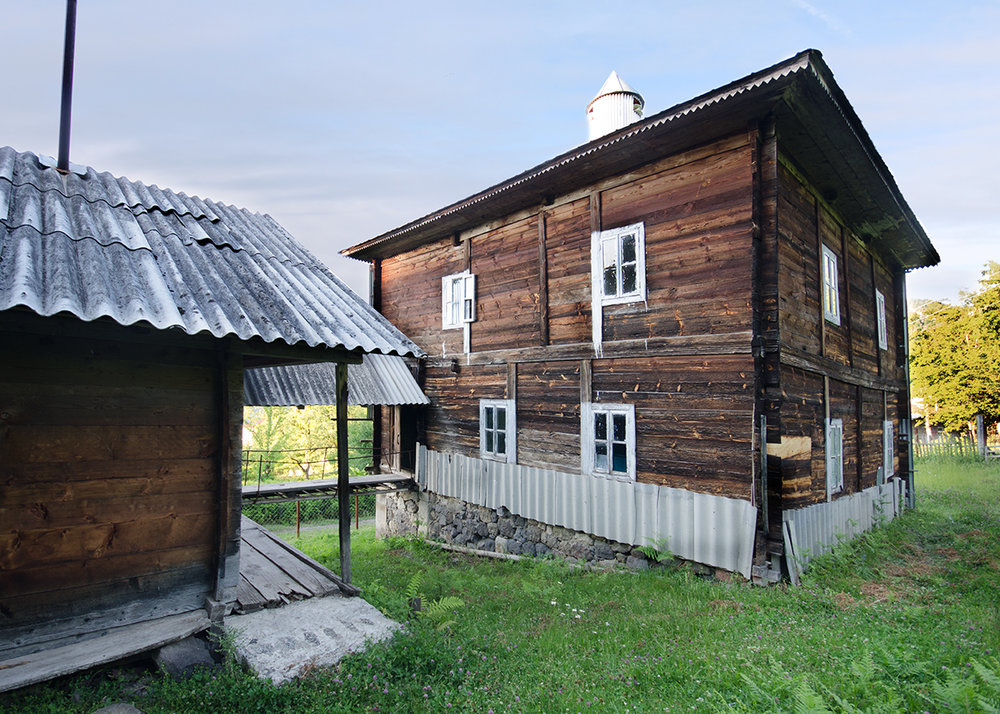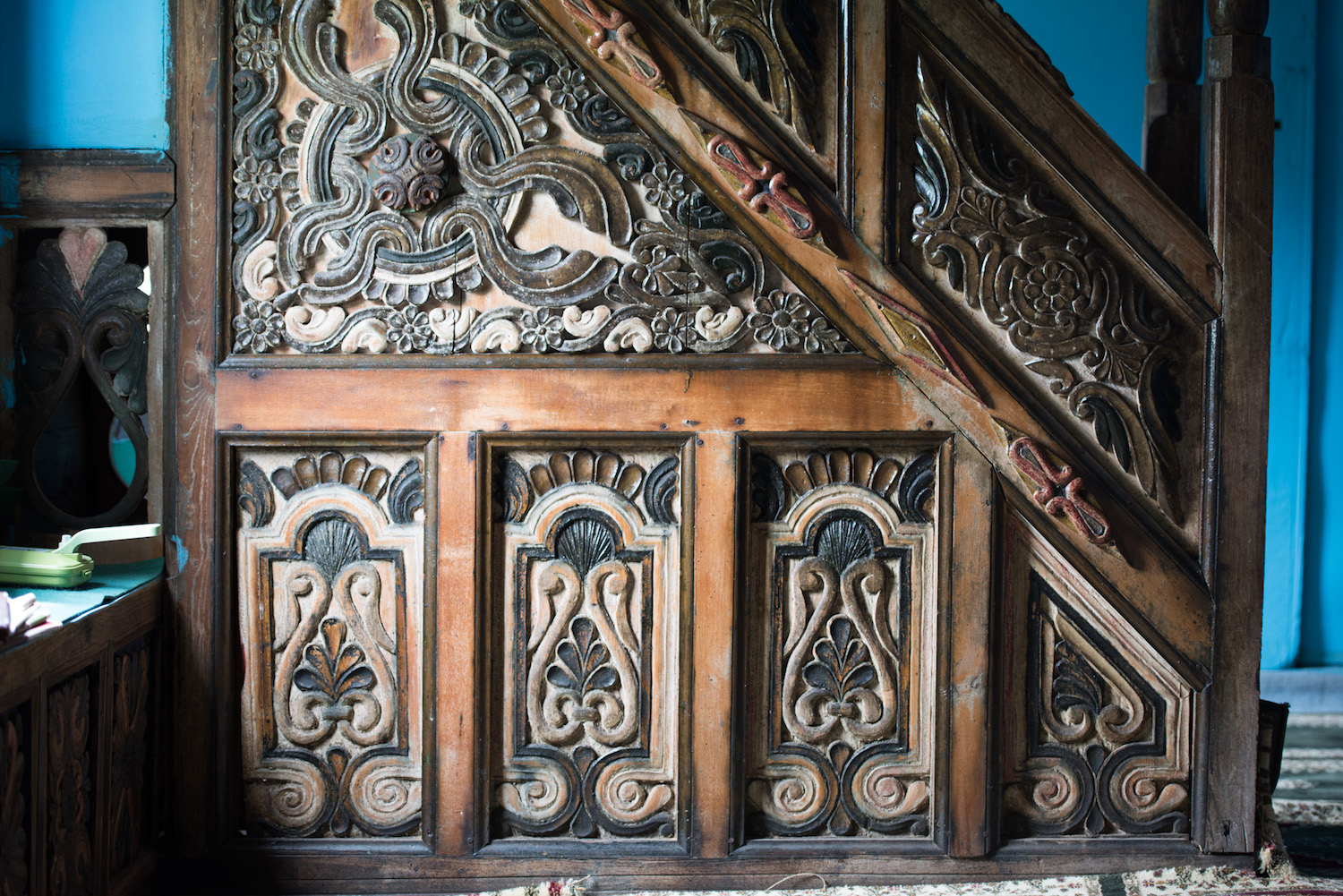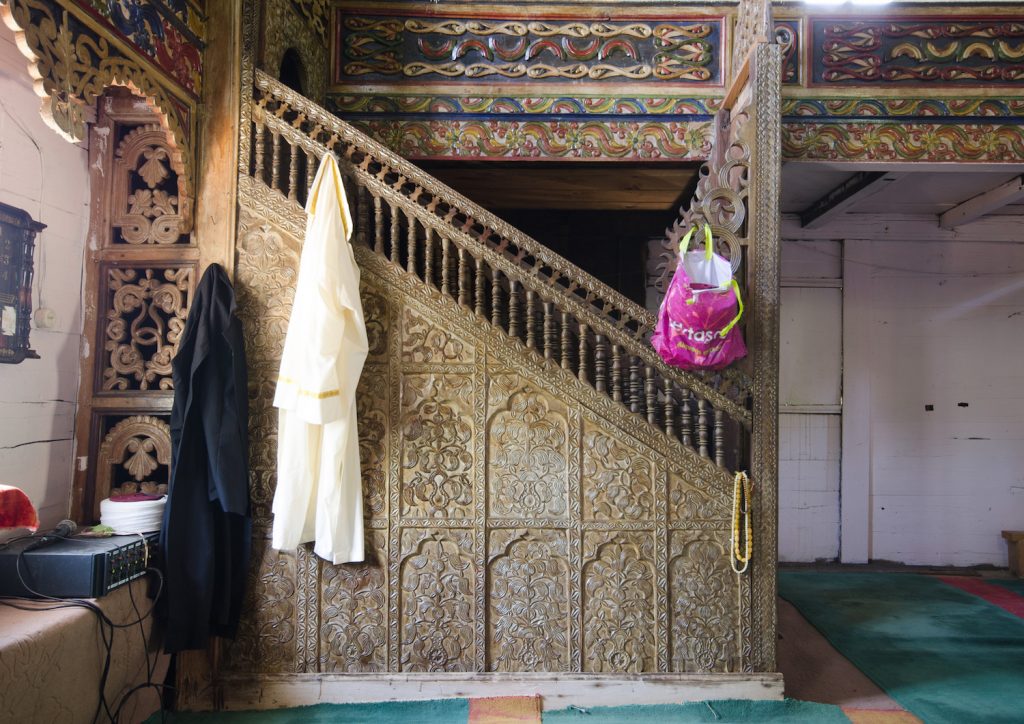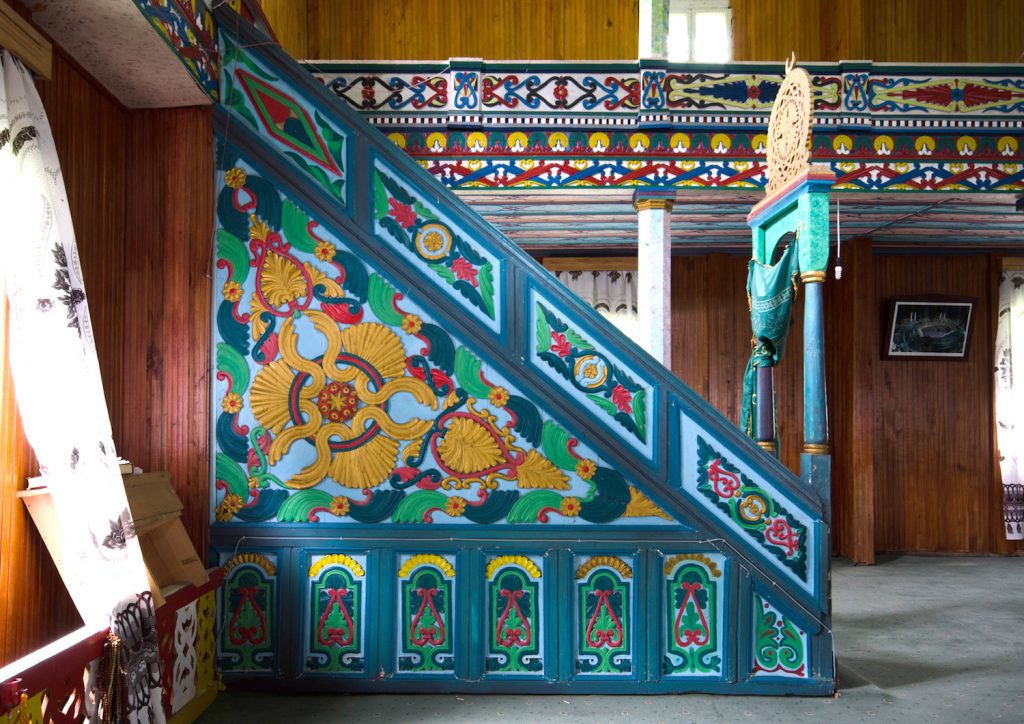Caring for Georgia’s old wooden mosques

The Caucasian nation might be predominantly Christian Orthodox, but it also harbours a valuable, often forgotten, Muslim heritage. The architecture and photography project “Indigenous Outsiders” carried by Suzanne Harris-Brandts, Angela Wheeler and Vladimer Shioshvili aims to let people discover the old wooden mosques of the Adjara province and raise awareness about their preservation.
Both mountainous and maritime, Georgia’s small Adjara province lays right at the border with Turkey; a boundary that during much of the 20th century was impossible to cross due to the Cold War. At that time, Georgia was part of the Soviet Union while Turkey was the main Western ally in the region. But few abroad know that, from the 16th century until 1878, Adjara belonged to the Ottoman Empire, a period during which its population became Muslim. This is one of the reasons why Adjara still enjoys an autonomous status within the Republic of Georgia. The other province enjoying a similar status according to the constitution is Abkhazia which has been de facto independent since the 1992-1993 war.

After decades of state sanctioned anti-religious communist policies, and a post-Soviet revival of the Orthodox faith in Adjara, Muslims are now a minority in the province. Near the coast, in urban areas like Georgia’s second-largest city Batumi, few traces remain of the Ottoman past. Most Muslim communities live inland where many small Islamic architectural gems are hidden. In villages in this mountainous and green area, many wooden mosques built during the 19th century are still standing. While they might look like normal houses from outside, their interiors are finely decorated and painted.
These buildings caught the attention of two researchers and one photographer, Canadian architect and PhD Candidate Suzanne Harris-Brandts, American PhD student Angela Wheeler, and Georgian-American photographer Vladimer Shioshvili, who decided to join forces in order to document this precarious and overlooked heritage through the ongoing project “Indigenous Outsiders”. In 2017 and 2018, they travelled to Adjara several times and researched thoroughly. However, due to the lack of written sources, much remains unknown about the wooden mosques. The team will present their material at an exhibition in Tbilisi, opening on June 22. For those who cannot come, it will still be possible to find information about many mosques and see pictures and architectural plans on the project’s website.

How did you start this project?
Harris-Brandts: In the course of working on other projects, we came to drive by some of these mosques and realised that there was very little documentation of them. It was a precarious moment for their documentation since we noticed that while some were physically deteriorating, others were being rapidly renovated or re-decorated in a manner that was not in keeping with their original designs. In both cases, the mosques were losing some of their original character. So we teamed up and decided to start documenting them in their present conditions.
Why do you call your project Indigenous Outsiders?
Harris-Brandts: When we started this project, we were particularly interested in the lesser-known narratives of Georgia. As it is predominantly Orthodox Christian, fewer people know that Adjara has a Muslim population. There are also cross-border ties in this region from when the Ottomans were around, for example the Laz craftspeople, would come from today’s Turkey to decorate Adjara’s mosques.
(author’s note: the Laz are an indigenous people living on the coast of Black Sea in Eastern Turkey. Their language is related to Georgian. Due to rural exodus, most Laz people now live in big urban centers.)
There is therefore a tension between the contemporary geopolitical borders and the religious ties that span across them; between what is indigenous and what is ‘outside’. While Georgians of Adjara consider themselves to be fully Georgian, they are also Muslims and can at times feel like an indigenous, yet outside, minority group in the country.
In relation to the mosques as works of architecture, the title ‘indigenous outsiders’ further speaks to the buildings as expressions of an Ottoman or ‘outside’ produced building typology which has then been interpreted and decorated in a local or ‘indigenous’ fashion.

Are there many abandoned mosques in Adjara?
Harris-Brandts: Very few mosques are abandoned in Adjara, because most are maintained by their communities, using the humble means available to them. There are a few abandoned structures; some that accidentally suffered fires during Soviet times when they would often be used to store hay and fertilizers, and others that have now been replaced with larger, nearby mosque facilities. In the case of the latter, the old mosques are often converted into madrasas or other community facilities and therefore remain in use. There has been some support by the Cultural Heritage Preservation Agency of Adjara for renovating them, and to provide some expertise and funding.
Shioshvili: Especially the mosques further inland tend to be more actively used, because there are more Muslim communities living there and less conversion to Christianity. But the villages there are struggling in the sense that there are not many people left; young people especially are moving closer to Batumi to find work more easily.
“One of the challenges with locating many of the mosques is that the communities can dismantle them and move them,” says Shioshvili.
Harris-Brandts: It’s not only the conversion to Christianity that is shaping these communities and the fate of their wooden mosques. There are other drivers too, such as the ongoing devastation of recurring landslides, which is one of the reasons why communities are depopulating. So there is an economic driver, a natural disaster driver, and a religious driver of community change.
Was it easy for you to find and list all of the mosques?
Harris-Brandts: No. Over time, the work we did was a mix of physically coming across them during our own field research and looking at other scholars’ work, such as that of professor Ruslan Baramidze, who has done some work from an anthropological point of view. Once we made our initial list of mosques and their locations, we found more by word-of-mouth and field travels.
Shioshvili: Our goal was not really to document every single mosque in Ajara. It was more about finding the architecturally, historically and culturally significant ones; the ones that, were they to disappear, it would be a loss. One of the challenges with locating many of them is that the communities can move mosques, dismantle them and move them. Sometimes you expect a mosque to be in a specific location – where it was five years ago – but then you go there and there is no mosque now. You ask around and people would say, our mosque is over there – but then it’s a brand new stone building. The older, wooden, mosque has been moved to the more mountainous areas with villages used as summer pasture. But people in Adjara are very friendly. When you ask them, they direct you. Sometimes people would go with us in the car, taking hours from their day, just to show us. Or they would find some kids who know who has the key of the mosque, in order to open it and let us in. Then, locals would sit there and talk to us very patiently. We are very thankful to the members of these communities.

Most of these wooden mosques don’t have minarets, why is that?
Shioshvili: As the locals told us, most of the mosques used to have minarets, but in the 1920s they were all demolished, due to Soviet anti-religious policies. These policies took a while longer to be implemented in Adjara’s mountainous areas. The closer a place was to the coast, the sooner the demolition would start. Mosques were usually converted into agricultural storage buildings, and sometimes into kinds of medical clinics. Across Georgia, larger buildings, like the cathedral in Batumi, were completely demolished, but Adjara’s mosques weren’t targeted as they were smaller and their architecture did not differ much from that of other houses.
“The buildings themselves are all very similar; they are rectangular with a Qibla wall facing Mecca and a second floor mezzanine overlooking the prayer hall,” says Harris-Brandts.
The interior decorations are quite striking. Are there some similarities between mosques?
Harris-Brandts: There are similar motifs across some of them, but there is a large degree of variance in terms of colour palettes and textures. The buildings themselves are all very similar; they are rectangular with a Qibla wall facing Mecca and a second floor mezzanine overlooking the prayer hall. There are three primary means of interior decoration. One is just paintings on the walls. There is a large variety in this regard; some carry local motifs from agriculture, such as corn or flowers; others are decorated with swords and Islamic references. Second, there is applied wood detailing, where small cutout pieces are nailed or glued as decorations and then painted in different colours. This is a way of making ornaments without having a skilled carver at hand. Third, and this is the most striking kind of decoration, is the actual wood carving, which usually was done by travelling Laz craftsmen. As we understand it, the architectural designs themselves were done locally and then, if the communities had the resources, Laz masters, when they travelled through the area, would ornament the interiors with a range of intricate carvings.

As far as I understand, some building are preserved and added to the heritage list, but most are not and there is no specific policy for preserving wooden mosques in Georgia?
Harris-Brandts: That is true, and I think it can go both ways, because it is not entirely clear that the communities really want to push for heritage listings. There are a lot of obligations that come with this, in particular economic aspects and the fact that a community cannot modify a listed mosque freely.
Shioshvili: My understanding is that the local Adjarian government’s approach is to concentrate on the mosques that are in conditions of disuse in majority Christian villages. It looks like this because they have not listed the ones found in inland Muslim areas, which are under less threat of physical deterioration due to ongoing community care and use.
Was there a specific mosque that caught your attention?
Harris-Brandts: There were particular components of different ones that I found to be really captivating. The interior of Dghvani is absolutely stunning, but I also really liked the mosque in Chao, which is quite small and on three levels. You enter through the basement and it has really great pastel colors.
Shioshvili: They are all really photogenic, I particularly like the ones that are painted inside and that they all have their own style. We think that in some cases the painting is more recent. We’ve also seen a couple where there’s absolutely no painting. We don’t know exactly how old the paintings are since the walls could have been repainted numerous times.


The exhibition “Wooden Mosques: Islamic Architectural Heritage in Adjara” will take place in Tbilisi between June 22 and July 6. Members of the project are also constantly updating their website, adding pictures and information about new mosques.
One thought on “Caring for Georgia’s old wooden mosques”
Comments are closed.
















amazing workmanship. so beautiful